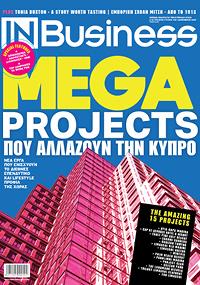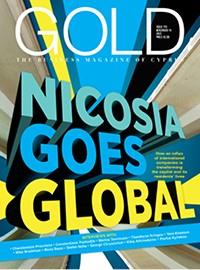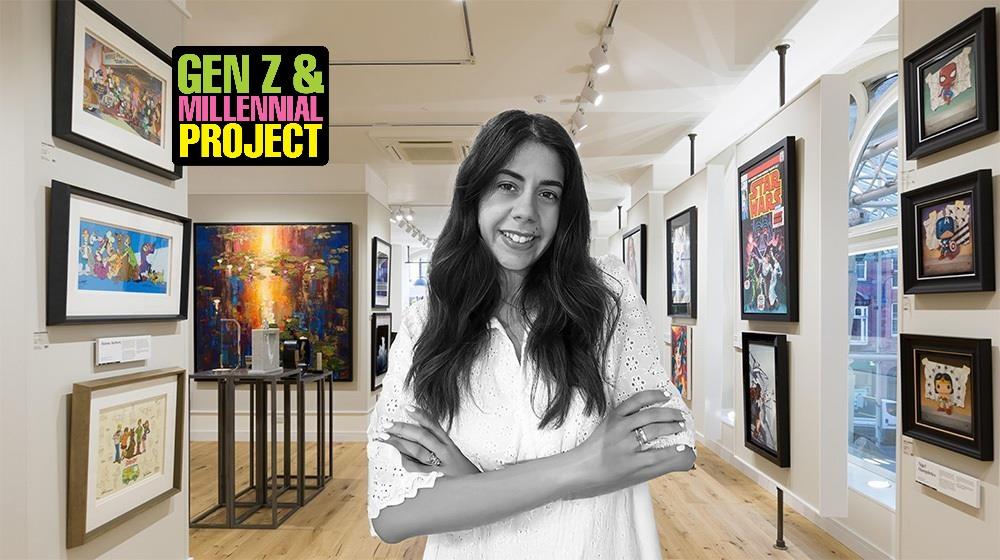In an era where emotional resonance intersects with financial prudence, art has emerged as both a cultural expression and a strategic asset. Art consultant Leonie Katsarona, Gallery Manager at Washington Green & Castle Fine Art, reflects on the shifting landscape of art investment.
From Europe’s institutional trends to Cyprus’ budding scene, Katsarona explores how collectors –seasoned and new – are navigating this dynamic market.
How would you characterise the current landscape of art as an investment?
Art has been part of the investment culture for a long time but it’s only in the past decade that have we observed a significant rise in institutional interest and wider participation. Art has become a hybrid asset of passion and portfolio. However, it remains an illiquid and often high-risk investment. Recently, numerous shifts have begun reshaping the art investment landscape by blending traditional market behaviours with emerging forces. Key among these forces are cultural shifts and technological integration, as well as a proven ability to bounce back during economic instability. In Europe, the introduction of regulated art funds and the rise of private sales through online channels have shifted transactions away from traditional auction houses such as Sotheby’s and Christie’s. These digital alternatives offer more discreet and cost-effective solutions, resulting in the acceleration of new avenues such as online art brokerage. International platforms like Artsy and Artnet have surpassed $15 billion in transaction volume (Forbes, 2024), allowing further access to blue-chip artworks through fractional ownership and blockchain-based models. Compared with the broader European art scene, the market in Cyprus is still developing but it has shown promising growth. The expansion of independent galleries and cultural initiatives is steadily gaining ground. Cyprus now hosts both solo and group exhibitions featuring local and international artists, reflecting a growing interest in art that could be further fuelled by foreign investment. A notable milestone is the recent launch of Vima, the country’s first contemporary art fair, which marks a significant step toward a more institutionalised and globally connected market.
What are the principal advantages of art as an alternative investment, particularly in today's increasingly diversified portfolios?
Art as an alternative investment offers a unique set of advantages that can complement and enhance diversified portfolios, particularly in today’s uncertain and dynamic financial climate. One of its principal benefits is its low correlation with traditional assets such as stocks. During periods of market volatility, art can help reduce the overall portfolio risk due to its relatively stable long-term performance. High-end artworks have historically shown resilience during currency devaluation, serving as an effective hedge against inflation. Tangible assets like fine art often retain or even appreciate during inflationary periods. This is often evident with works by blue-chip or historically recognised artists, which are inherently limited in supply. Unlike publicly traded assets, art prices do not fluctuate on a daily basis. The private nature of art transactions also helps insulate the market from panic selling and short-term market overreactions. Additionally, art investment merges tangible and cultural values. Investors not only benefit from potential financial returns but also from the emotional and aesthetic enjoyment that art provides. Owning art can provide cultural capital, though sometimes it is overlooked. Being an art patron opens doors to exclusive networks, events and exhibitions, fostering long-term value that goes beyond financial gain.
What are the 'golden rules' that one should bear in mind when acquiring art for investment purposes?
As art investment becomes increasingly mainstream among HNWIs, particularly as a strategy to diversify portfolios, serious collectors and investors should bear several fundamental principles in mind to reduce risk and enhance long-term value. As a Gallery Manager and someone who closely monitors developments in the art market, I strongly encourage prospective investors to consult with experts, especially if they are unfamiliar with the field intricacies. Experienced art advisors can provide valuable guidance – they help identify undervalued works and avoid pitfalls such as forgeries, which is crucial when dealing with high-value acquisitions. Investing in knowledge is important and prioritising provenance and authenticity should always be the first step. It's essential to collaborate with trusted dealers, galleries or auction houses that can provide certificates of authenticity, condition reports and verified ownership histories. Keeping up with market trends and artist trajectories is another key component of smart art investing. Evaluating an artist’s current status – whether emerging, mid-career or established – can greatly influence the level of risk involved. Researching auction results, gallery representation and institutional support helps create a clearer picture of an artist's long-term potential. Finally, when investing in art, quality should always take precedence over quantity.
According to the 2025 Art Basel & UBS Art Market Report, global art sales fell by 12% in 2024 to an estimated $57.5 billion, whilst the volume of transactions rose by 4% to 40.5 million. How has this recalibration of the market been reflected in the interests and behaviours of clients?
This recalibration has brought to light several evolving trends in client behaviour and collecting psychology, resulting in numerous market adaptations. The drop in total sales value paired with a rise in transaction volume, indicates the emergence of a more cautious, value-aware and diverse collector base. Buyers are growing their collections with an increasing focus on cultural relevance, market potential and personal resonance rather than just acquiring eye-catching masterpieces. In the meantime, many HNW collectors have adopted a "wait and see" mentality, which has led to a discernible softening in the high-end market, where seven-figure sales are now becoming less common, unless there are truly exceptional pieces. It's interesting to note that the number of younger and first-time collectors has increased remarkably. With greater accessibility through digital platforms, a younger demographic has entered and established itself in the market by acquiring lower-value artworks. Such 'fresh era’ collectors are often influenced by social media and drawn to aspects of art that extend beyond monetary investment. They emphasise characteristics such as identity, narrative and cultural representation. As a result, buyer focus has been shifting toward emerging and marginalised artists, including women and non-Western voices, whose markets are still developing but hold strong growth potential. This reflects a broader desire to invest in art that aligns with personal values and global conversations.
Online sales declined by 11% to $10.5 billion in 2024, lower than the last four years but still 76% above pre-pandemic 2019, while the share of e-commerce out of total art market sales was stable year-on-year at 18%. In what ways has the growth of digital platforms influenced art sales?
Online sales now represent almost one-fifth of the global art market. The COVID-19 pandemic significantly accelerated this shift, demonstrating that digital platforms are essential to keeping the art market active. Many buyers came to realise that art is more accessible than they had previously assumed. In today’s world, a few clicks are enough to get original works from all around the world at affordable prices, often under £1,000. Digital platforms have improved not only transparency but also access to market data, which enables collectors to search and purchase artworks without being intimidated by galleries or auction houses. These platforms can potentially offer more visibility into pricing, artist information and past sales records, thus helping collectors have greater awareness when making decisions. This level of transparency is gradually shifting the art world from its traditionally opaque nature. The rise of new business models has also reshaped how art is sold. Traditional entities (well-known galleries and auction houses) have since invested heavily in digital infrastructure, offering live bidding, online-only sales and curated digital catalogues in order to remain competitive in an evolving market. Nowadays, many platforms go further and add augmented reality previews, video content and virtual viewing rooms, which improve the way collectors interact with artworks remotely. These hybrid experiences not only simulate the physical gallery experience but also help build the buyer’s trust as well as confidence. While the human, tactile element of art appreciation remains important, digital space has become indispensable for reaching today’s connected, global collector base.
What are the key factors that determine the pricing of an artwork?
Artwork pricing is influenced and dependent by a combination of objective and subjective factors. A key determinant is the artist’s reputation, which drives market demand and influences auction performance, contributing to higher price points. Similarly, an artwork’s provenance (its ownership history) can significantly enhance its value. If the artwork has a notable ownership history, especially if it’s been part of important collections or shows, it’s more likely to command a premium. This closely aligns with the importance of condition and authenticity. Any restoration work will affect an artwork’s value, so it is essential that condition reports and certificates of authenticity are provided during the acquisition process. Rarity is becoming more important in pricing as well, especially in the case of hand-signed, limited-edition prints. Generally, the lower the edition number, the more valuable the print tends to be. Whereas unique or original works typically sell for higher prices due to their one-of-a-kind nature. Finally, it’s important to distinguish between the primary market (where prices are set by galleries) and the secondary market (resales through auctions or private dealers), where prices are subject to broader market fluctuations. Collectors as well as investors should be aware that values can vary between these two channels.
Should collectors approach acquisitions with their heart, their head or a balance of both?
Collectors should ideally approach acquisitions with a balance of both heart (passion) and head (practicality). Passion is what draws people to art in the first place as it creates a personal connection, a sense of joy and cultural fulfilment. As such, a work should resonate with you both aesthetically and intellectually. However, in today’s increasingly data-driven and competitive market, a strategic mindset is equally important, particularly for those viewing art through an investment lens. Acquiring artworks based solely on an emotional response can lead to impulsive decisions that most likely will be regretted. On the flip side, a more analytical approach that focuses only on numbers will overlook the emotional and cultural value that often leads to lasting personal enjoyment. The most successful collectors tend to buy artworks that they love, backed up by informed decisions while keeping the broader market context in mind.
Looking ahead, what are your projections for the European art market over the coming years?
My personal projection is that the European art market is likely to experience steady – albeit cautious – growth in the coming years. This will be shaped by ongoing economic challenges, shifting collector behaviours and continued digital integration. Although not immune to global market volatility, Europe’s art scene remains resilient thanks to its solid cultural background, institutional support and knowledgeable collector base. As previously mentioned, we can expect a continued shift toward the mid- and lower end of the market, alongside the introduction and adoption of new digital and hybrid innovations that will continue to respond to evolving trends and collector behaviours. However, uncertainties such as geopolitical tensions, including the war in Ukraine and shifting EU policies, might shake market confidence moving forward. There is no doubt that the European art market is steadily moving towards a more inclusive, digitally integrated and regionally diverse future. While growth may be more moderate than in previous booming periods, the next phase is likely to prioritise sustainability, accessibility and cultural relevance.
This article first appeared in the 2025 edition of The Cyprus Journal of Wealth Management. Click here to view it. To view the full edition, click here
- Project Partners: Bank of Cyprus, Cablenet, European University Cyprus and PwC Cyprus









